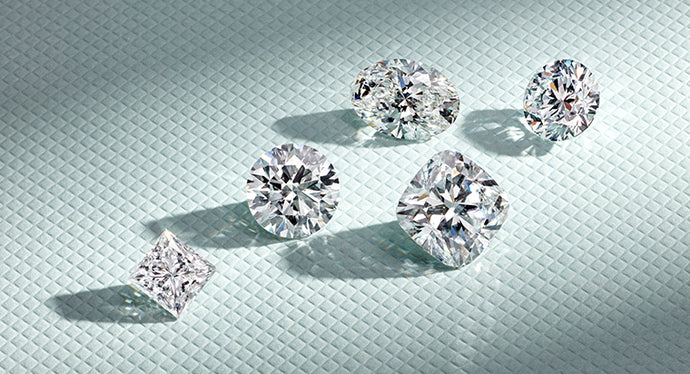The debate between lab-grown diamonds and natural diamonds has gained significant traction in recent years. As more consumers become conscious of the ethical, environmental, and economic implications of their purchases, lab grown diamonds vs natural have emerged as a popular alternative to their natural counterparts. This article delves into the key differences between lab-grown diamonds and natural diamonds, examining factors such as their creation, cost, sustainability, and market acceptance.
What Are Lab-Grown Diamonds?
Lab-grown diamonds, also known as synthetic or man-made diamonds, are created through advanced technological processes that replicate the natural conditions under which diamonds form deep within the Earth. The two most common methods of producing lab-grown diamonds are High Pressure High Temperature (HPHT) and Chemical Vapor Deposition (CVD). Both techniques involve using carbon sources to create diamonds that are chemically and physically identical to natural diamonds.
In terms of appearance, lab-grown diamonds are indistinguishable from natural diamonds. Both are made of pure carbon atoms arranged in a crystalline structure, and they share the same hardness and optical properties. Despite their identical composition, lab-grown diamonds tend to be priced lower than natural diamonds, offering an affordable option for those seeking a beautiful gemstone.
The Creation Process: Lab-Grown Diamonds vs Natural
The fundamental difference between lab-grown diamonds and natural diamonds lies in how they are formed. While natural diamonds take millions of years to form under intense heat and pressure deep within the Earth’s crust, lab-grown diamonds can be produced in a matter of weeks or months. This accelerated creation process allows for greater control over the quality and characteristics of the diamond, resulting in a more consistent product.
In contrast, natural diamonds are the result of geological processes that are not only time-consuming but also unpredictable. This makes natural diamonds rarer and often more expensive than lab-grown diamonds. For consumers looking for a gemstone with a unique origin story, a natural diamond may hold more appeal. However, lab-grown diamonds offer a more reliable and ethical choice for those who prioritize environmental sustainability and social responsibility.
Cost Comparison: Lab-Grown Diamonds vs Natural Diamonds
One of the most significant advantages of lab-grown diamonds is their affordability. Due to the controlled creation process and the reduced mining costs, lab-grown diamonds are typically 30% to 40% less expensive than their natural counterparts. This price difference is especially appealing to consumers who are looking for a diamond of similar quality but at a more budget-friendly price.
On the other hand, natural diamonds are often seen as a symbol of luxury and exclusivity, which can contribute to their higher price tags. The rarity of natural diamonds, coupled with the costs associated with mining and transporting them, adds to their expense. For many consumers, the allure of owning a natural diamond may outweigh the financial savings offered by lab-grown diamonds.
Environmental Impact: Lab-Grown Diamonds vs Natural
When it comes to sustainability, lab-grown diamonds have a distinct edge over natural diamonds. The process of mining natural diamonds is resource-intensive, often requiring the excavation of large amounts of earth, which can result in environmental degradation, deforestation, and habitat destruction. Additionally, diamond mining can lead to significant carbon emissions and other ecological impacts.
Lab-grown diamonds, by contrast, have a much smaller environmental footprint. While the energy required to produce lab grown diamonds varies depending on the method used, it is generally lower than the environmental impact of traditional diamond mining. Furthermore, many lab-grown diamond manufacturers are increasingly adopting renewable energy sources, further reducing their carbon footprint.
Ethical Considerations: Lab-Grown Diamonds vs Natural Diamonds
Ethical concerns surrounding the diamond industry have been widely discussed, especially regarding the prevalence of conflict diamonds, also known as “blood diamonds.” These are diamonds mined in war zones and sold to finance armed conflict, often under exploitative conditions. Lab-grown diamonds present a more ethical alternative, as they are created in controlled environments with no ties to human rights abuses or conflict.
Natural diamonds, however, have long been associated with issues such as child labor, unfair wages, and unsafe working conditions in some mining regions. While the industry has made strides toward improving labor standards and promoting ethical sourcing through initiatives like the Kimberley Process Certification Scheme, challenges still remain. Consumers concerned with ethical sourcing may find lab-grown diamonds to be a more responsible choice.
Market Acceptance: Lab-Grown Diamonds vs Natural Diamonds
Although lab-grown diamonds are becoming more popular, they still face some challenges when it comes to market acceptance. Many consumers remain skeptical of lab-grown diamonds, viewing them as inferior to natural diamonds because of their synthetic origin. However, as awareness of the benefits of lab-grown diamonds grows, this perception is gradually changing.
Natural diamonds continue to dominate the luxury market, with many consumers still viewing them as the ultimate symbol of wealth and prestige. However, as lab-grown diamonds gain in popularity, some experts believe that they may eventually become more mainstream, especially as consumers place greater emphasis on ethical and environmental considerations.
Conclusion: Lab-Grown Diamonds vs Natural Diamonds
The debate between lab-grown diamonds and natural diamonds is complex, with both options offering unique advantages and considerations. Lab-grown diamonds excel in terms of affordability, environmental impact, and ethical sourcing, making them an appealing choice for consumers who prioritize these factors. On the other hand, natural diamonds continue to hold value due to their rarity, long history, and perceived luxury status.
Ultimately, the decision between lab-grown diamonds and natural diamonds comes down to personal preferences and priorities. As the diamond industry evolves, it is likely that both types of diamonds will coexist, with consumers choosing the option that best aligns with their values and needs.






